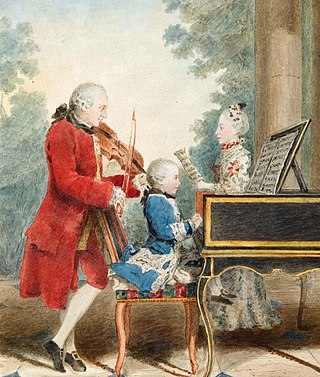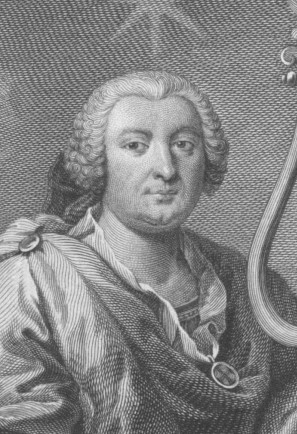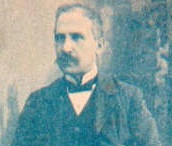Joel Leonard Sheveloff (September 26, 1934 - November 8, 2015) was an American musicologist, teacher and author.
Joel Leonard Sheveloff (September 26, 1934 - November 8, 2015) was an American musicologist, teacher and author.
Sheveloff graduated from the City University of New York, Queens College, majoring in clarinet then earned a master's and a doctorate from Brandeis University. His 1970 dissertation on the keyboard instrument music of Domenico Scarlatti [1] attracted attention by scholars. According to Robert Marshall [2] and Carlo Grante, [3] Ralph Kirkpatrick's iconic, exemplary work was eventually challenged by Joel Sheveloff. Sheveloff's Scarlatti scholarship(1970-1985), based on a close analysis and comparison of the manuscript and printed historical editions of the sonatas, contradicted Kirkpatrick's claim to have established a chronological order for Scarlatti's keyboard works. Although Scholars have long assumed Scarlatti's preferred instrument to have been the harpsichord, Shevleoff again made a case that Scarlatti would have used Bartolomeo Cristofori's newly invented fortepiano. [4] According to Michael Talbot, Sheveloff is "the doyen of living Scarlatti scholars" [5] while W. D. Sutcliffe said that Sheveloff's doctoral dissertation represents the most important detailed work on the sources, providing "the most considered commentary on Scarlatti's syntactical habits." Sutcliffe takes seriously Sheveloff's claim that Scarlatti's Style is composed of 'an abundance of tiny, special details'. [6]
As a professor of music at Boston University, Sheveloff received the Metcalf Award for Excellence in Teaching, the University's highest teaching honor, in 2004. [7] Although he lectured on diverse musical subjects covering medieval keyboard compositions, Baroque composers, Purcell, Mozart, Haydn, Music under the Tsar and the Soviet Union, Ravel, Brahms, Schubert, 20th-century music, his scholarly focus was the work of Domenico Scarlatti, Modest Mussorgsky, and Igor Stravinsky. He was also interested in specialist areas of meter, methods of musical analysis, and text setting as well as interpretation of the complex Musical Offering , a piece he referred to as " J. S. Bach's DaVinci Code." [8]

The Classical period was an era of classical music between roughly 1750 and 1820.

Domenico Alberti was an Italian singer, harpsichordist, and composer.
A concerto is, from the late Baroque era, mostly understood as an instrumental composition, written for one or more soloists accompanied by an orchestra or other ensemble. The typical three-movement structure, a slow movement preceded and followed by fast movements, became a standard from the early 18th century.

Sonata, in music, literally means a piece played as opposed to a cantata, a piece sung. The term evolved through the history of music, designating a variety of forms until the Classical era, when it took on increasing importance. Sonata is a vague term, with varying meanings depending on the context and time period. By the early 19th century, it came to represent a principle of composing large-scale works. It was applied to most instrumental genres and regarded—alongside the fugue—as one of two fundamental methods of organizing, interpreting and analyzing concert music. Though the musical style of sonatas has changed since the Classical era, most 20th- and 21st-century sonatas still maintain the same structure.

Giuseppe Domenico Scarlatti, also known as Domingo or Doménico Scarlatti, was an Italian composer. He is classified primarily as a Baroque composer chronologically, although his music was influential in the development of the Classical style. Like his renowned father Alessandro Scarlatti, he composed in a variety of musical forms, although today he is known mainly for his 555 keyboard sonatas. He spent much of his life in the service of the Portuguese and Spanish royal families.

Muzio Filippo Vincenzo Francesco Saverio Clementi was an Italian composer, virtuoso pianist, pedagogue, conductor, music publisher, editor, and piano manufacturer, who was mostly active in England.

Trevor David Pinnock is a British harpsichordist and conductor.
The siciliana[sitʃiˈljaːna] or siciliano[sitʃiˈljaːno] is a musical style or genre often included as a movement within larger pieces of music starting in the Baroque period. It is in a slow 6
8 or 12
8 time with lilting rhythms, making it somewhat resemble a slow jig or tarantella, and is usually in a minor key. It was used for arias in Baroque operas, and often appears as a movement in instrumental works. Loosely associated with Sicily, the siciliana evokes a pastoral mood, and is often characterized by dotted rhythms that can distinguish it within the broader musical genre of the pastorale.
Ralph Leonard Kirkpatrick was an American harpsichordist and musicologist, widely known for his chronological catalog of Domenico Scarlatti's keyboard sonatas as well as for his performances and recordings.

José António Carlos de Seixas was a pre-eminent Portuguese composer of the 18th century. An accomplished virtuoso of both the organ and the harpsichord, Seixas succeeded his father as the organist for Coimbra Cathedral at the age of fourteen. In 1720, he departed for the capital, Lisbon, where he was to serve as the organist for the royal chapel, one of the highest offices for a musician in Portugal, a position which earned him a knighthood. Much of Seixas' music rests in an ambiguous transitional period from the learned style of the 17th century to the galant style of the 18th century.
The year 1703 in music involved some significant events.

Alessandro Longo was an Italian composer and musicologist.

9902 Kirkpatrick, provisional designation 1997 NY, is a Florian asteroid from the inner regions of the asteroid belt, approximately 4 kilometers in diameter. The asteroid was discovered on 3 July 1997, by American amateur astronomer Paul Comba at Prescott Observatory in Arizona, United States, and named after American musician Ralph Kirkpatrick.

Baroque music refers to the period or dominant style of Western classical music composed from about 1600 to 1750. The Baroque style followed the Renaissance period, and was followed in turn by the Classical period after a short transition, the galant style. The Baroque period is divided into three major phases: early, middle, and late. Overlapping in time, they are conventionally dated from 1580 to 1650, from 1630 to 1700, and from 1680 to 1750. Baroque music forms a major portion of the "classical music" canon, and is now widely studied, performed, and listened to. The term "baroque" comes from the Portuguese word barroco, meaning "misshapen pearl". The works of George Frideric Handel and Johann Sebastian Bach are considered the pinnacle of the Baroque period. Other key composers of the Baroque era include Claudio Monteverdi, Domenico Scarlatti, Alessandro Scarlatti, Alessandro Stradella, Antonio Vivaldi, Tomaso Albinoni, Johann Pachelbel, Henry Purcell, Georg Philipp Telemann, Jean-Baptiste Lully, Jean-Philippe Rameau, Marc-Antoine Charpentier, Arcangelo Corelli, François Couperin, Johann Hermann Schein, Heinrich Schütz, Samuel Scheidt, Dieterich Buxtehude, and others.
Giorgio Pestelli is an Italian musicologist.
Carlo Grante is an Italian classical pianist. He graduated at the National Academy of St Cecilia in Rome with Sergio Perticaroli. Later he also studied with Ivan Davis, Rudolf Firkušný, and Alisa Kezheradze. He is known as a performer of mainstream classical composers such as Franz Liszt, Wolfgang Amadeus Mozart, and Domenico Scarlatti, as well as highly demanding late romantic and 20th-century composers such as Leopold Godowsky, Ferruccio Busoni, George Flynn, Roman Vlad, Michael Finnissy, Alistair Hinton, and Kaikhosru Shapurji Sorabji. His discography consists of more than 50 albums.

Essercizi per gravicembalo(Exercises for Harpsichord) is a collection of thirty sonatas by Domenico Scarlatti. It was published in London on 3 February 1739 and dedicated by the composer to King John V of Portugal. The latter summoned the composer to Lisbon to teach his daughter, Barbara of Portugal, to play the harpsichord.

The Keyboard Sonata in D minor, K. 141, is a solo keyboard sonata written for harpsichord by the Italian composer Domenico Scarlatti. The sonata is characterised by fast repeated notes throughout, which makes it generally difficult to play. Because of its virtuosity, the piece is also described as a toccata. The piece contains many idioms characteristic of Scarlatti, such as hand crossing, a technique most closely associated with the composer. The piece is in D minor, which is Scarlatti's most used minor key. Scarlatti's sonata shows a Spanish influence, especially of Spanish dance music with guitar technique and syncopated rhythms.